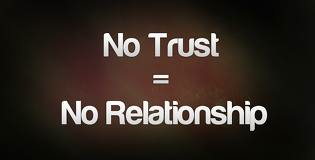
So far in this series I’ve discussed how a good manager can help keep good people and what MGOs can do to stay beyond the 2.3 years they normally average in their position.
The third area I want to look at is the donor.
We all know that great MGOs are always trying to establish, and then deepen relationships with their donors. They are doing this ultimately for two reasons:
1) to discover the passion and interests of their donors, and, 2) to help deepen the relationship the donor has with the organization’s mission.
If those two things are accomplished, great things happen for the donor and for the organization.
However, if an MGO is actually moving around every two years, it’s almost impossible to accomplish this. Richard and I have heard from some of you that it would have been very difficult for you to secure a six or seven figure gift without putting in the years it took to fully establish trust with the donor.
If you think about it, in many ways you are establishing a serious relationship with an individual. How does that donor feel when you leave? It’s almost like a divorce.
Now, I’m not saying you have an obligation to stay at your organization, but before you jump ship and consider the greener grass, let’s not forget the relationship you have established or take it too lightly.
If managers are putting pressure on MGOs to quickly “bring in the money”, the whole idea of developing and establishing trust with a donor goes out the window. Developing trust with a donor takes time. Yes…time. The pressure thing is not going to be helpful in the long run, so stop doing it.
Recently I listened to a panel of major donors discussing how they appreciated being cultivated and stewarded by major gift officers. It was fascinating because it’s not often that you get this kind of honest feedback from donors. What struck me most was how open they were to beginning new relationships with an organization or cause they felt passionate about. However, they said it took years to establish enough trust for them to really “invest” in (i.e. give a large sum of money to) that organization.
If the person who is establishing a relationship with that donor leaves before that trust is built, the organization will never get to a point where a large investment is possible. This is why it’s so important for an organization to do everything it can to keep good MGOs and development professionals.
I read recently that it costs an organization an average of $127,000 to replace a good MGO, considering all the recruitment costs, training and lost revenue until the new MGO ramps up.
It’s sobering, isn’t it?
Now, consider the 150 relationships that have to be re-established with the new MGO. And now try doing that every two years. I’m exhausted thinking about it.
Donors need to feel they can trust your organization. That will only come with a solid relationship with someone at that organization. This fact cannot be taken lightly.
What Happens if You do Leave?
As I said earlier, while Richard and I want you to take the relationships you’ve established seriously, you are not obligated to stay at an organization because of those relationships. If, after careful consideration, you do need to leave, there is a proper and considerate way to do that.
Too often, we’ve run into some awful situations in which the MGO leaves, is angry with the organization and manages to sour the donor’s perception and passion for the organization. This is an absolute no-no. Why would you do this? If something happened at the organization you didn’t like, keep that to yourself and move on quietly and with dignity.
Another situation we’ve seen is when an MGO leaves and takes the donor with her to the next organization because of the great relationship they’ve had. Don’t do this! And, if you interview an MGO and he tells you he has a bunch of donors he will bring with him, DO NOT HIRE him!
Richard and I believe this is unethical and just plain wrong. Remember, while you have established a great relationship with a donor, the sole purpose of that relationship is about connecting to the mission…NOT YOU! You are just the conduit to deepening that relationship. If you are bringing donors with you, there is something wrong with you.
When you move on you have an obligation to the donors you are leaving to transition them to the next MGO as best you can. The best situation is to personally introduce the new MGO, either in person or on the phone, and show the donor how wonderful this new MGO will be. Remember, this is all about the organization, NOT YOU.
You don’t want to burn bridges. Trust me on this. You may think you’ll never be back or you won’t have to deal with “those people” again, but it’s a small world and you want to treat this situation and the people around it like you would want to be treated.
And, remember…always think about the donor in this situation. What if you were in his or her shoes? How would you want to be treated?
We’d really love your considerations, as an MGO, on how you think about the donor and how you have transitioned your caseload to others. Tell us some helpful stories. And, thank you to all the folks in the Passionate Giving community who have shared comments and advice. It’s been really helpful to hear from you.
Jeff
Links:
Series intro
#1 What Can Managers Do?
#2 What Can MGOs Do?
Search Blog Posts







Jeff
I changed positions about 2.5 years ago. I handled my departure just as you advised. The major relationships, I took the other MGO along on visits and transitioned the relationship. All the donors expressed being thankful and a few talked about the integrity that it took do this. None of them had ever had someone do this for them. Great advice in this blog today!!!
Scott
That is awesome, Scott! Thanks for having so much integrity. You will be so successful as an MGO. Thank you.
Jeff
Jeff- At my last development position (higher ed) I had a great manager that made sure I never said “my donors,” and that I was always preparing the relationship with the institution, not with me. We had other MGOs that were doing the opposite, and with tact, we used them as an example of what not to do.
When I left, the donors I worked with said things like, “great, good for you and congratulations. Now, who is my next contact at XXX?” This validated my work and that managers influence. One great way to incorporate some of your strategy is to have your MIC all filled out. I think one of the best selling points of the MIC is that it also functions as a succession plan for your caseload-nice and easy with the next few months steps already planned out for “MGO next.”
Regards,
JZ
You are absolutely right, Jason! The Marketing Impact Chart (or strategic plan) is the best thing to have for the following person who comes in after you. Thanks for your comments. Good stuff.
Jeff
Hey guys-
I’ve never commented before, but I really, really appreciate your comments about bringing donors with you. As a new MGO at a small nonprofit, I’ve heard nothing but rave reviews from our finance department and board about how our former ED was a fundraising superstar- “she would come back from every meeting with a $1k check”. While I can handle that kind of chatter (because the longer I’m in Dev the more it feels like most of my job is managing other peoples’ anxiety about my job) it has seriously de-energized our new ED and she feels like she’s failing by investing time in building trust.
Of course, what we’re seeing now is that the donors who were cutting the $1k checks gave to her because of her personal relationship with them, and not because of the organization’s mission. I’ve been trying to cultivate these donors and get in touch for eight months, and haven’t heard a thing. Our budget was built with their renewals in mind, and because they have been MIA it cost our organization $8k, not to mention the significant staff time of attempting to reach them.
It’s so devastating for the long-term sustainability of an organization (and so disheartening for a dev professionals and EDs) to depend on donors who only care about a charismatic MGO or leader- and so, so costly to rebuild after they leave. There’s this total arrogance with some fundraisers in our field who claim they have a whole rolodex of people who will make gifts just because they call them up, and I just want to shake them- what does that mean for the organization after you leave? What costs will that have for your organization’s clients?
I feel so, so strongly that my job is to organize donors to put money behind their values so they can directly create the change they want to see in the world. I’m so glad you brought this up. THANK YOU.
Leah O.
Minneapolis, MN
Leah, thanks for sharing your story. The situation you describe happen all the time, unfortunately. Hang in there.
Jeff
Loved each part of this series. In the donor section, though, I was expecting to read that frequent moves by an MGO might erode their credibility with a donor. Our passion for the mission of our organization can only ignite something in the donor if that passion is believable. If the donor knows that last year her MGO worked for the symphony, and two years before that worked for a college, how can she believe the passion she’s hearing from the MGO about the importance of curing cancer? Of course she might look past that issue and give because she independently believes in the mission. But then who needs the MGO in the picture?
I’ve been an MGO at The Hunger Project for over 10 years, and I was supporting the organization for some time before I came on staff. So when I talk to a donor or a prospect, they look at me as someone who is personally invested with a long term commitment to the mission. I have enormous credibility, and I think that has been a factor in my success. To this day I get choked up almost every time I lead a presentation about our work. I’m moved by the work that we do, by our partners in the developing world who are ending their own hunger, and by who I am in the process.
Could I work for another cause? I used to think not, but now I think I could. But it would have to be something about which I was truly passionate. I owe that to myself, to the non-profit I’m joining and to the donors I’ll be meeting. And having been at my previous job for a long time would add credibility to my joining the new place. I would be able to say “I loved working for the end of world hunger. And I wouldn’t be talking to you unless I thought that the work we’re doing here at [insert name of non-profit here] was having a huge impact on people’s lives.”
That’s going to be hard to pull off if my resume shows me moving every two or three years.
Jim, you are absolutely right. The MGO MUST be passionate about the cause they are raising money for. You make a really good point about questioning the MGO who moves every couple of years and how passionate they must be about the cause. I hadn’t thought of that. Thanks for your insight.
Also, thanks for all the good work you are doing alleviating hunger around the world.
Jeff